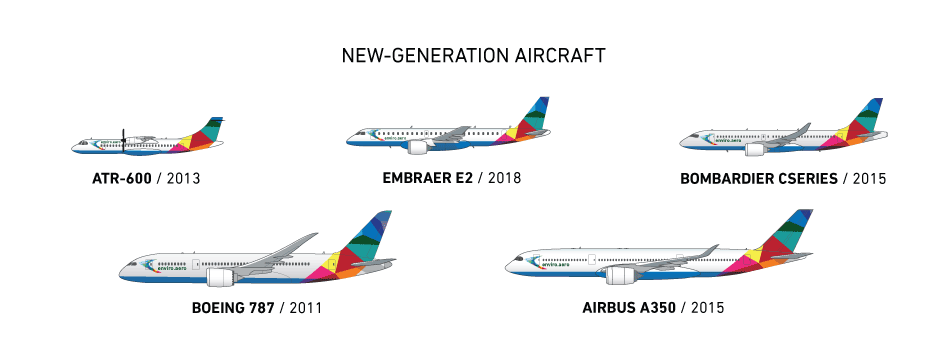From the moment new aircraft are thought of, engineers are working out how to make them more efficient. In fact, aviation is one of the most technologically-advanced and innovative sectors in the world.
Unlike ground vehicles, which don’t need to be optimised for efficiency to the same extent as aircraft because they can refuel often, long-distance aircraft must carry all their fuel with them. Fuel is expensive, heavy and takes up a great deal of storage room. Its weight can limit the range of an aircraft and it needs to be stored in tanks which affect the wing size and the payload able to be carried. At the same time, the aviation industry is doing all it can to limit its environmental impact.Each new generation of aircraft has double-digit fuel efficiency improvements, even up to 25% more fuel efficient than the one it replaces. This has led to today’s modern aircraft producing well over 70% less CO2 per seat than the first jets in the 1950s. But there is more work to do.
New technologies on the horizon have the potential to significantly decrease greenhouse gas emissions from aviation, and solutions that are being implemented today also promise other savings. Even small savings here-and-there offer significant benefits in total.
Being able to operate efficiently is critical to the future of the aviation industry, not just for environmental reasons but also for financial ones, especially since fuel makes up over 30% of airline operating costs.
To formalise and compliment the market-driven evolution in aircraft fuel efficiency, the International Civil Aviation Organization (ICAO) agreed on a CO2 emissions standard in February 2016, which will apply to all new aircraft designs from 2020 and newly-built existing models of aircraft from 2023.

The aviation industry has a track record of achieving the impossible
Before the Wright Brothers, few people believed powered flight was possible. This spirit of innovation has continued, and it is driving the industry’s response to its environmental challenges. As examples:
- Aviation has been successful at decoupling emissions growth and actual growth. Traffic growth is increasing at an average of 5% annually, while CO2 emissions are growing around 3%.
- Newer aircraft, like the Airbus A380 and Boeing 787, consume on average less than three litres per 100 passenger kilometres or more than 78 passenger statute miles per US gallon. This is a fuel use which compares favourably to that of compact cars, although aircraft travel much further distances, much faster.
- The next generation of aircraft to come off the production line, including the Airbus A350XWB, A320neo, Boeing 737MAX, Embraer E2 series and Bombardier CSeries will offer further improvements in fuel burn and emissions.
- Turboprop aircraft like the Bombardier Q400 and ATR series can provide a more fuel-efficient alternative to jet aircraft to cover shorter distances
Manufacturers are increasingly using light-weight materials such as carbon composites to build aircraft and components. The Boeing 787, Bombardier CSeries and Airbus A380 and A350XWB aircraft all use these cutting-edge materials and technologies to deliver exceptional gains in environmental performance. Manufacturers of engines are also using highly advanced materials and processes such as additive layer manufacturing to develop new engines.
Technology on new aircraft can either be to improve fuel burn through aerodynamic efficiency (mainly airframe), or to reduce actual combustion use (mainly engine-related). Combined, these elements create a new aircraft with a reduced environmental impact.
Aircraft have a useful life of around 25-30 years, during which they will cover many millions of nautical miles and carry millions of passengers or tonnes of cargo. Because of the long lead times for developing, designing and manufacturing a modern civil aircraft, there tend to be ‘waves’ of new aircraft entering the fleet. We are currently in the middle of such a wave, with a number of new aircraft types coming into the system and replacing older, less fuel-efficient aircraft.
The industry is working hard to achieve the kind of ‘impossible’ developments that characterised flight itself.
No comments:
Post a Comment